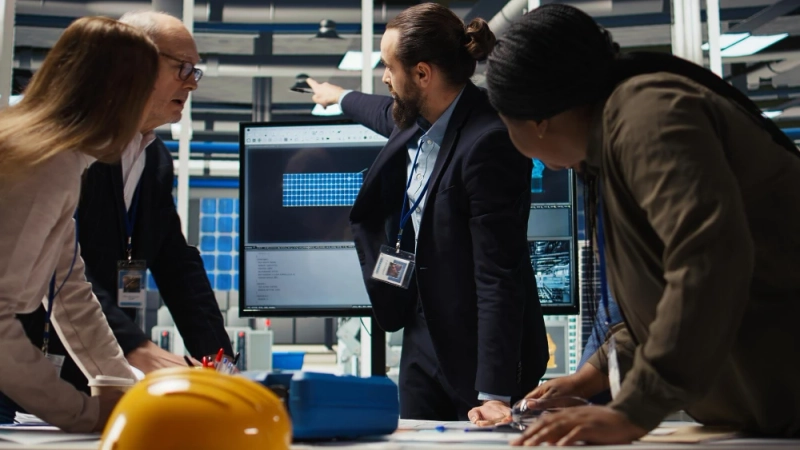In today’s unpredictable world, security has become one of the most discussed topics among business owners, homeowners, and even communities. Yet, despite technological advancements and awareness campaigns, there are still many misconceptions about what true security really means.
These myths often lead people to make poor decisions, underinvest in safety, or trust ineffective measures. Understanding the difference between perception and reality can help create safer environments and smarter security practices. Let’s explore and debunk some of the most common security myths that still circulate today.
Myth 1: Security Systems Alone Can Prevent Crime
One of the biggest misunderstandings is that installing a security camera or alarm system automatically makes a property crime-proof. While technology plays a vital role in deterrence and detection, it’s not foolproof. Criminals continue to adapt and find ways around poorly monitored systems. What truly enhances safety is a combination of human vigilance and smart systems. Cameras can record incidents, but it’s trained professionals who analyze patterns, respond quickly, and make critical decisions in real time. The most effective approach is layered security—blending technology with human expertise for proactive prevention.
Myth 2: Security Is Only Needed During the Night
Another common misconception is that security threats happen only after dark. In reality, data shows that incidents like theft, fraud, and unauthorized access often occur during the day, sometimes even during peak business hours. This happens because workplaces are busier, making it easier for intruders to blend in unnoticed. Effective protection requires 24/7 surveillance, regular patrols, and coordinated monitoring to ensure no hour is left unguarded. Security planning must be continuous, not conditional on time.
Myth 3: Hiring Security Is Too Expensive for Small Businesses
Many small business owners shy away from security services assuming they are costly. However, this belief often overlooks the financial and emotional cost of a single security breach. Losses from theft, vandalism, or data leaks can far exceed the investment required for professional security. Modern security solutions are scalable and designed to suit every budget from small offices to large enterprises. Moreover, trained security teams and automated systems can often reduce costs in the long run by preventing major incidents before they occur.
Myth 4: Security Guards Are Just for Show
Some believe security guards exist mainly to create an impression of safety rather than offer real protection. This couldn’t be further from the truth. In reality, trained security personnel are the backbone of effective protection. They are equipped with the skills to detect suspicious activity, de-escalate conflicts, manage emergencies, and enforce access control. Their presence alone often discourages criminal behavior, while their quick response can contain threats before they escalate. Unlike static systems, human guards think, adapt, and act, making them an essential part of modern security strategies.
Myth 5: Technology Has Made Human Security Obsolete
Automation, AI cameras, and remote monitoring have indeed revolutionized the industry, but they haven’t replaced people, they’ve empowered them. Smart technology enhances human decision-making by providing real-time insights, data analytics, and early warning systems. However, machines still lack intuition, empathy, and judgment, which are crucial during high-pressure situations. The future of security lies in integration, where people and technology work together seamlessly for maximum efficiency.
Myth 6: Security Is a One-Time Setup
Many organizations assume that once they install cameras or alarms, the job is done. But security isn’t static; it’s an ongoing process that requires regular updates, maintenance, and assessment. Threats evolve, and so should protection strategies. Systems need software upgrades, guards require retraining, and risk assessments should be repeated to adapt to new vulnerabilities. Continuous evaluation ensures that security measures stay ahead of potential threats.
The Need for an Integrated Security Approach
Modern threats are complex, involving both physical and digital risks. This has led to a growing demand for companies that can offer unified protection, covering everything from access control to cybersecurity. An integrated security services provider brings together physical guards, electronic surveillance, risk management, and technology-driven monitoring under one umbrella. This synergy ensures faster response times, reduced operational gaps, and improved overall protection. Businesses that adopt this approach experience smoother coordination and higher efficiency in managing potential risks.
Myth 7: “It Won’t Happen to Me”
Perhaps the most dangerous myth of all is the belief that security breaches only happen to others. This mindset often prevents individuals and organizations from taking preventive action. In truth, no one is immune, criminals often target places that appear least prepared. Whether it’s a startup, a residential community, or a large corporation, security vulnerabilities exist everywhere. Awareness, preparedness, and professional guidance are the real defenses against such risks.
Security Myths Debunked: The Reality Behind Modern Protection
As we step into an era driven by innovation and interconnectedness, the meaning of security continues to evolve. Relying on outdated beliefs can expose individuals and businesses to unnecessary risks. Real safety requires a balance between technology, human intelligence, and proactive planning.
Partnering with a professional security expert ensures that every layer from physical access to data protection is handled with precision. By debunking long-held myths and adopting evidence-based practices, organizations can build a culture of security that is both effective and future-ready.
Conclusion
The truth about security is that it’s not about fear, it’s about foresight. Dispelling myths helps people make smarter choices and invest wisely in their safety. The most secure spaces are not those protected by gadgets alone but those backed by awareness, professional expertise, and adaptability. By understanding these realities and working with trusted professionals, businesses and individuals can build environments that are resilient, efficient, and truly safe.



